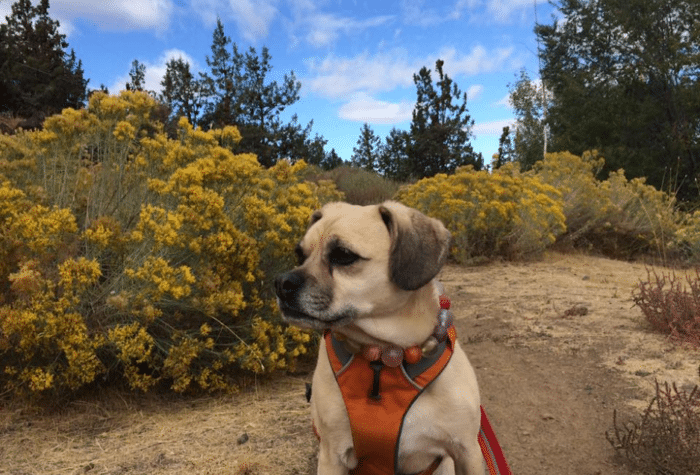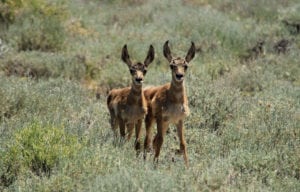Author: Renee Schiavone | Published: June 7, 2023 | Category: Species Spotlight
This article originally appeared in The Source on June 7, 2023.
The resilient pronghorn has raced through millennia, but their future is in our hands.
Pronghorn (Antilocapra americana) may be the most recognizable of all wildlife in Oregon’s vast sagebrush sea. Commonly — but mistakenly — also referred to as “antelope,” this migratory species is an indicator of the health and resiliency of their sagebrush habitats. If pronghorn populations are faring well, then likely so is their ecosystem. Where pronghorn are suffering, we might have a problem.
“Prairie Ghost”
Poetically known as “Prairie Ghost,” the pronghorn is both elusive and blazingly fast. Capable of bursts of up to 60 miles per hour, their anomalous speed is a relic from a bygone era when they needed to flee the worthiest of carnivorous adversaries: the extinct North American cheetah. Pronghorn are turbocharged to run! They’ve evolved an oversized heart and lungs to take in large gasps of oxygen, spring-like padded hooves to absorb rocky terrain and large eyes to see their predators from afar. While their speed is now unnecessary, greatly exceeding that of all modern-day predators, it’s always captivating to watch pronghorn take off across the desert.
Drawn to open, expansive terrain, pronghorn are at home in Oregon’s rolling hills of sagebrush steppe. In fact, they cannot live without it. Pronghorn are considered a sagebrush “obligate” species, meaning they depend on sagebrush to survive. Healthy sagebrush habitats are a broad mosaic of sagebrush shrubs, perennial bunchgrasses and wildflowers, laced with desert creeks, and punctuated by Western juniper and groves of Quaking aspen.
As idyllic as it seems, the sagebrush sea isn’t without its extremes. The landscape is hot in summer and bone-chilling in winter, requiring unique adaptations of its inhabitants. To survive the excessive temperatures, pronghorn have evolved specialized hairs for heating and cooling. The species also migrates annually between winter and summer ranges – sometimes traveling more than 100 miles – to find available food sources.



